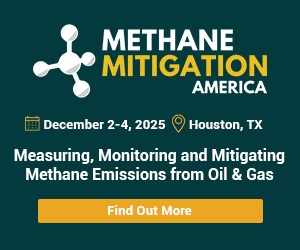-
President Donald Trump touted his administration’s work on a “gigantic natural gas pipeline in Alaska” during his joint address to Congress.
Summary by Bloomberg AI
-
The project, which has been planned for decades, aims to transport natural gas across the state and export it overseas, with potential investment from Japan, South Korea, and other nations.
Summary by Bloomberg AI
-
Trump’s vocal support for the project has shifted the dynamic, with high-level engagement happening daily, and the president promising to ensure it “gets built to provide affordable energy to Alaska and allies all over the world” next year.
Summary by Bloomberg AI
President Donald Trump on Tuesday touted his administration’s work on a “gigantic natural gas pipeline in Alaska,” signifying his efforts to invigorate a long-stalled $44 billion project to transport natural gas across the state and export it overseas.
The administration is “working on a gigantic natural gas pipeline in Alaska, among the largest in the world, where Japan, South Korea and other nations want to be our partner with investment of trillions of dollars each,” Trump said during his joint address to Congress.
Trump’s comments are set to follow weeks of talks between US officials and Asian allies aimed at luring investment dollars and offtake agreements for the Alaska liquefied natural gas venture. Although it’s been planned in some form for decades, the project faces headwinds from its large price tag and mammoth scale, including the challenge of constructing an 800-mile pipeline across the state.
Trump pressed Japanese Prime Minister Shigeru Ishiba on the project during their meeting in February, winning his commitment to cooperate on strengthening energy security, “including increasing exports of United States liquefied natural gas to Japan in a mutually beneficial manner.” US officials, including Interior Secretary Doug Burgum and Energy Secretary Chris Wright, discussed the project in a meeting with Korean representatives last week.
The investment size mentioned by Trump seems to go beyond what Ishiba has pledged so far. The Japanese leader hasn’t announced a specific investment figure for the project while he promised to raise the stock of the nation’s foreign direct investment into the US to $1 trillion. Japan’s standing FDI in the US is already about as big as its annual budget.
The Philippines is planning to procure LNG from Alaska, and President Ferdinand Marcos Jr. intends to discuss the matter with Trump, the archipelago’s ambassador to the US, Jose Manuel Romualdez said last month on X.
Senator Dan Sullivan, a Republican from Alaska, said he’s interacted with Taiwan officials interested in the venture too.
There’s been “high-level engagement that is literally happening on a daily basis,” Sullivan said. “Things are aligning in a way that hasn’t happened before.”
Trump has prioritized the project, promising in a social media post days after the 2024 election he would ensure it “gets built to provide affordable energy to Alaska and allies all over the world.”
The president also used a Jan. 20 executive order to officially make it US policy to “prioritize the development of Alaska’s liquefied natural gas potential, including the sale and transportation of Alaskan LNG to other regions of the United States and allied nations within the Pacific Region.”
The personal involvement of Trump, a former real estate developer who prides himself on cutting deals, marks a major shift for the complex Alaska LNG project.
Vocal support from the president, who is eager to reduce US trade deficits and enthusiastic about American energy potential, has swiftly shifted the dynamic, Sullivan said. “We now have a federal government, starting literally at the top with President Trump himself, that is highly motivated to get this project done,” Sullivan said.
Asian allies have shown interest as they look for ways to head off Trump’s threatened tariffs. The project also offers the promise of a shorter shipping distance to Asia than US Gulf Coast alternatives, as well as avoiding the Panama Canal, which saw severe bottlenecks in 2023 due to drought. US supporters also have pitched the project as a way to strengthen relationships with the US while avoiding potentially less flexible supplies from Qatar.
There are dividends for Alaska, too. The project would open new markets for massive gas reserves now stranded on Alaska’s North Slope. And in the short term, it would import natural gas to supply Alaska, offsetting declining production in the state’s long-tapped Cook Inlet.
The project is now backed by a state-run agency called the Alaska Gasline Development Corporation and privately owned Glenfarne, a company that is proposing to build two LNG plants in the US but has yet to launch either of them.
Share This:




 CDN NEWS |
CDN NEWS |  US NEWS
US NEWS 
































COMMENTARY: Selected US States Offer Enormous Advantages for AI Data Centers – Yogi Schulz